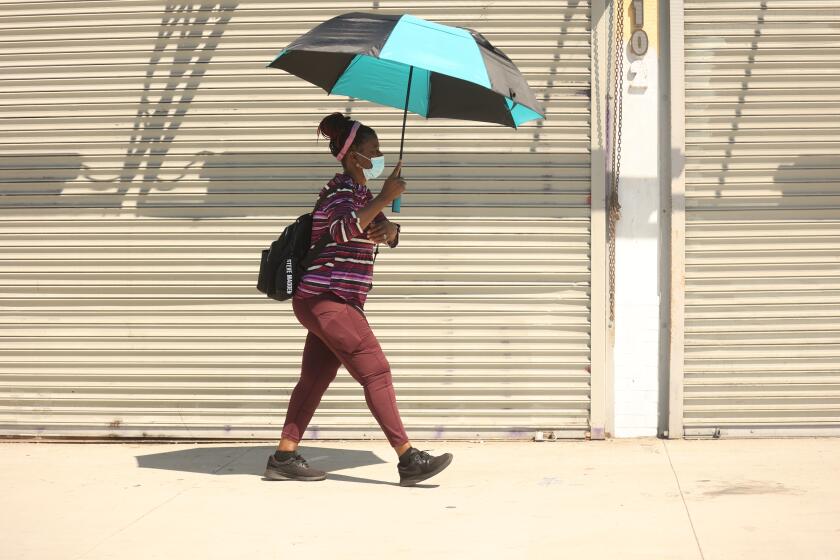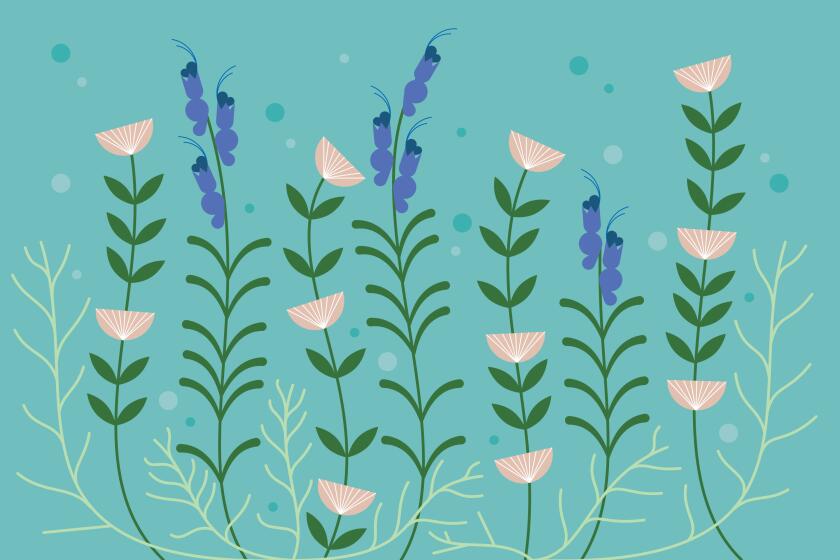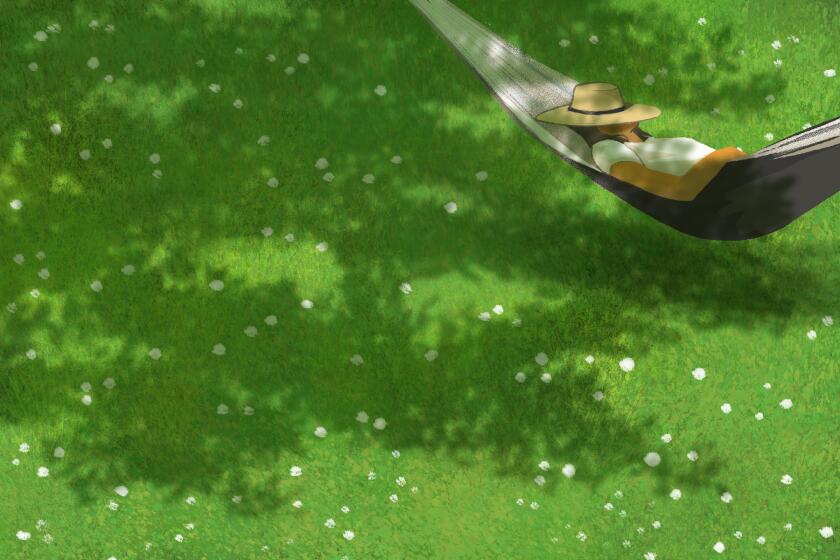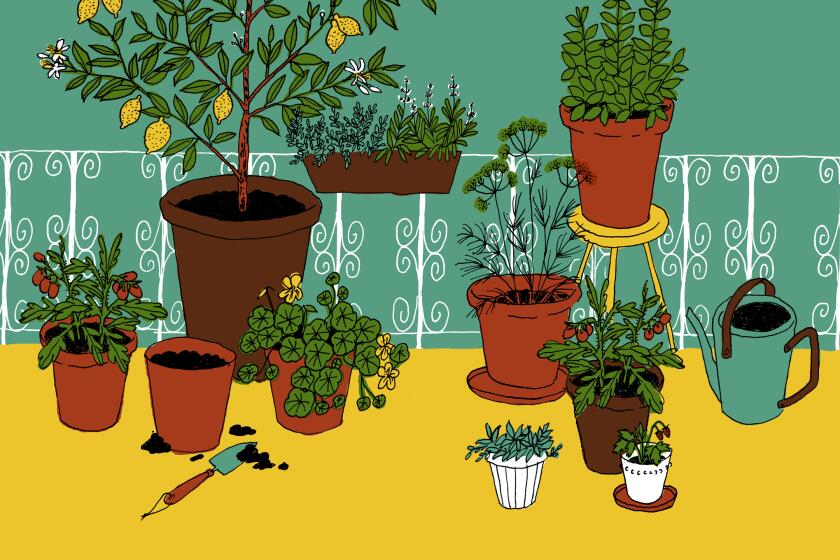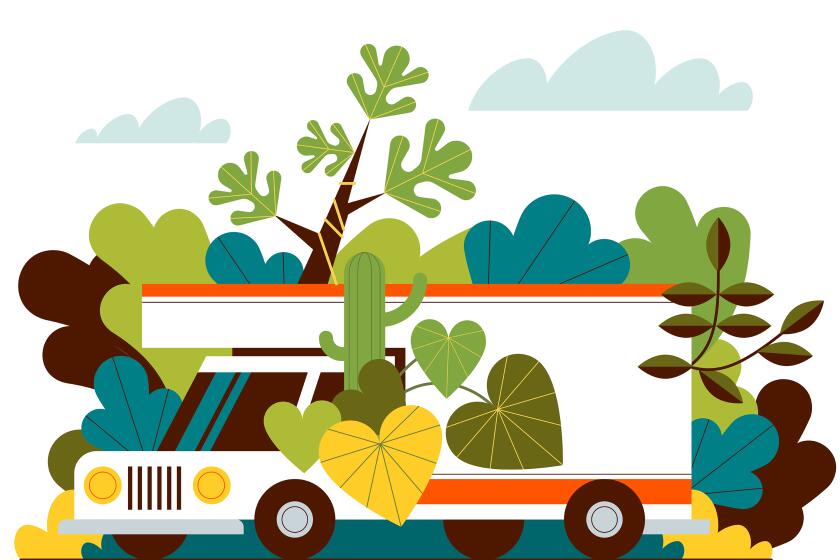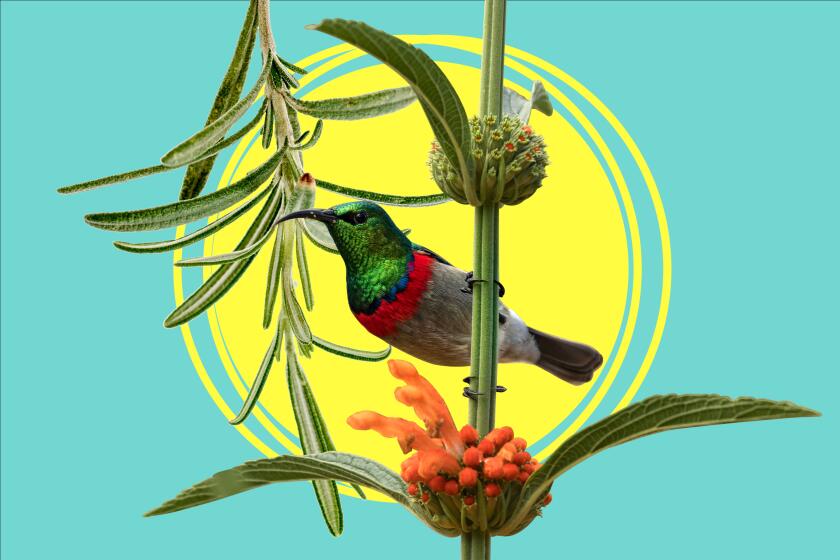Another blistering heat wave is here. Start protecting your plants now
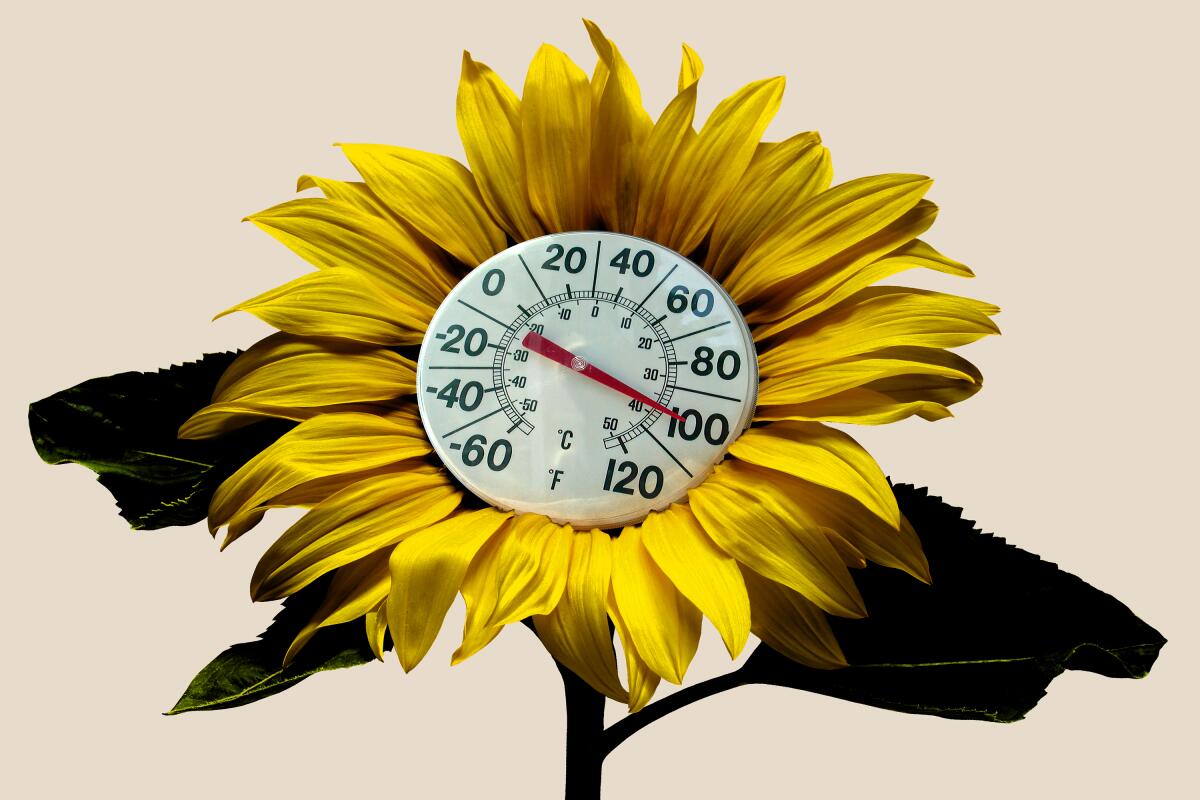
The calendar may be pointing toward the cooler days of fall, but SoCal’s weather gods didn’t get the memo. Temperatures have jumped into the triple digits locally, and they might climb as high as 106 degrees in Pasadena, 107 degrees in Burbank and 108 degrees in Calabasas on Thursday and Friday, with little relief forecast over the weekend.
Which means your precious outdoor plants could be scalded unless you take precautions now.
Outdoor container plants are especially vulnerable because they dry out so quickly, but at least you can move them to a shadier area.
Meteorologists say temperatures could reach 115 degrees in the San Fernando Valley. Burbank, Woodland Hills and Palm Springs could also see triple digits.
Plants in the ground have few options unless you water them deeply now before the heat is upon us and rig up some kind of sun protection for your more tender perennials and shrubs. The goal is to avoid the kind of damage caused back in July 2018 when a blast of heat sent temperatures soaring into the triple digits overnight, scalding fruit on the vine, shriveling leaves and crisp-ifying flowers across Southern California.
At Descanso Gardens, for instance, where the temperature jumped from 74 to 114 degrees in a single day in July 2018, most of its fabled camellias were damaged by sunburn, said Rachel Young, former director of horticulture and garden operations at the La Cañada Flintridge site who now works as the public landscape administrator for the city of Santa Monica. With proper care, Descanso staff members were able to nurse them back to health.
But fruits and vegetables on the vine? Not so lucky. “I had grapes at home that were just about ripe,” she said, “but that evening, they were raisins, and I don’t like raisins.”
That was the same month a vacationing friend sent me a smug message gloating about how he’d missed the heat wave, until he returned and surveyed the wreckage around his Pasadena home.
“Lost many plants in my yard,” he texted. “Very upsetting. Blow torch.”
An apt description.
Native plants have a reputation for hardiness, but it’s wrong to treat them like weeds — they need nurturing when they’re first planted to grow and thrive.
Searing temperatures can be devastating to the garden, but there are ways to salvage and protect your plants from the blistering heat, say Young and Yvonne Savio, retired director of Los Angeles County’s master gardener program, who now speaks about gardening and runs gardeninginla.net.
Here are their tips for dealing with the heat. But remember: Grab a hat, lots of water and your own sun protection gear before heading into the garden.
1. Water deep
A slow, deep watering at the base of the plant is the best prep for excessive heat because it coaxes roots deeper into the ground.
“Plants are like people; they get lazy,” Young said. “If they get water for five minutes every day, they keep their roots near the surface, so by watering deeply you’re training the plants to send their roots deep in the soil where the water is.”
In general, Young recommends deep-watering most plants once a week. For how long? It depends on your soil, but long enough to saturate the soil a good foot in depth. Vegetables might need deep watering two or three times a week when it’s really hot, she added. Savio sinks 5-gallon planting containers (the type with drain holes) between plants in her garden and fills them three times with water, once a week, to send water deep into the ground.
When you know a hot spell is on the way, you can prepare by watering deeply at ground level, ideally at night or very early morning, when the air is cooler.
Trees may not be able to solve all our problems but they can offer a reprieve on hot summer days. Here are several of our favorite places to find shade in the L.A. area.
2. But don’t overwater
When the temperatures reach triple digits, plants just shut down, which means they can’t absorb or “perspire” water, Savio said. By the end of the day, the plants may seem to be wilting, but test the soil before you pull out the hose. If the soil is dry, add some water, which the plants can absorb once the temperatures drop at night. But if a pot feels heavy or the soil feels damp an inch or so under the ground, your plant doesn’t need more moisture and could drown from getting too much water, she said. The best test is to check the plant again in the morning, Savio said. If it hasn’t recovered and is still wilting, give it more water.
You don’t need land to grow food. We talked to six L.A.-based experts who explain how you can easily grow veggies, fruits and herbs in pots on your balcony or any other small space.
3. Check pots twice daily
When it’s super hot, it’s critical to do a moisture check on your potted plants every day, first thing in the morning, by using a moisture meter (such as this $13 model on Amazon) or sticking your index finger a few inches into the soil to see if it comes out dry (if there’s moist soil clinging to your finger, the plant is not ready for watering.) Then do it again in the late afternoon, especially with thirsty veggies like tomatoes, because plants in containers dry out faster than plants in the ground, so you may have to water them twice a day. Water slowly and thoroughly, so you drench all the soil in the pot and don’t just send water shooting down the sides of the container and out the bottom.
4. Consider your containers
Avoid dark-colored containers, which absorb the heat more than lighter colors do and can fry a plant’s roots, Young said. Wrap dark pots in light-colored cloths to reduce their heat absorption. Or put potted plants inside larger pots to give them some insulation and shade, but make sure both pots have good drainage. Plants drown in standing water, even when it’s hot.
5. Don’t water in the sun
As tempting as it sounds, don’t hose down your plants in the middle of the day; those water droplets turn into mini magnifying glasses on the leaves and intensify the heat. Savio does recommend spraying plants to cool them down, but only after the sun sets. (This applies only when nights stay warm. Night watering in cooler temperatures can promote mildew, so it’s best to water in the early morning so the plant has a chance to dry off during the day.)
We test three different transportation options: driving, flying and shipping.
6. Make some shade
A big beach umbrella works, as do airy (30% to 40%) shade cloths. You can also use old bedsheets, rigged-up cheesecloth or propped-up cardboard to give your plants a break from the scorching rays, especially in the afternoon when temps reach their peak. Make sure your shade covering allows air to circulate freely around the plants. If the only cloths you have handy are dark, remember they can absorb heat and burn any foliage they touch, so keep them several inches away from the plants. Savio has some tips for shading plants on her website. And here are some other shade ideas, including an easy D.I.Y. garden shade you can make out of PVC piping and a bedsheet.
7. No more planting
Plants don’t like change; even moving them from one container to another can tax them. But transplanting when temperatures are in triple digits is just plain sadistic. Your plants will be stressed enough just trying to get through the hot weather without the added burden of trying to adjust to a new environment, Savio said. Best to keep them in a shady spot and wait until the temperatures stay below 85 degrees for a while before transplanting them into another pot or the ground.
8. Don’t remove damaged foliage
Those brown leaves and branches serve as protection against additional damage and could be harboring living tissue, so hands off the pruners for now.
9. Stop all pruning until fall
Even plants that look OK are going to be stressed in this heat, and pruning just adds to it. Let them grow as they wish and prune when it’s cooler.
10. Forget the fertilizer
Root systems suffer in high heat; absorbing fertilizer can do further damage. A compost mulch and low-nitrogen (numbers less than 3) organic fertilizers are OK, Young said, if they don’t include manure, fish or blood, because those contain salts, which can cause heat stress and burning.
Drought-resistant plants like hummingbird sage and rosemary are the ideal addition to Southern California gardens.
11. Be ruthless
If you find that your carefully tended baby tomatoes, peppers, squash and beans have blistered and withered, let them go. They aren’t going to miraculously ripen on the vine, Savio said. Remove them so the mama plants can focus on recovering. And know that high heat stops tomatoes from producing, so don’t expect more fruit to set until the temperatures dip below 85 to 90 degrees for 10 days in a row.
12. Make an exception for roses
The no-pruning rule doesn’t apply to roses, because they are so susceptible to disease. “You don’t want to leave a ton of dead tissue for diseases and insects,” Young said, so remove withered blooms and branches.
More to Read
Updates
3:32 p.m. Sept. 4, 2024: This story was updated with a new introduction and details and information about the September 2024 heat wave.
Sign up for The Wild
We’ll help you find the best places to hike, bike and run, as well as the perfect silent spots for meditation and yoga.
You may occasionally receive promotional content from the Los Angeles Times.
